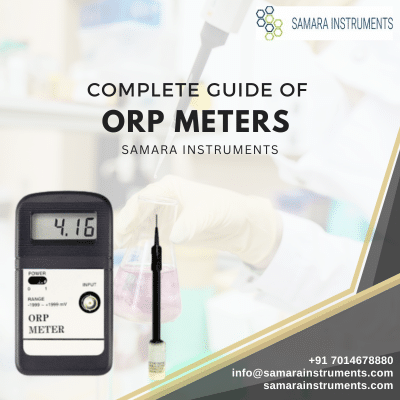An ORP Meters, also known as a Redox Meter, is a powerful tool for measuring the Oxidation-Reduction Potential of solutions. It plays a vital role in various industries, offering precise insights into the quality of liquids and ensuring that critical processes and products meet quality standards. In this article, we explore the functions, components, and versatile applications of ORP meters.
Key Components of an ORP Meters
- ORP Electrode: At the core of an ORP meter is the ORP electrode. Typically made of noble metals like platinum, it measures the potential difference between a reference electrode and the working electrode, which is in direct contact with the solution being analyzed.
- Reference Electrode: The reference electrode maintains a stable reference voltage to ensure the accuracy of the measurements.
- Meter Display: The meter features a display that shows the ORP value in millivolts (mV).
How Does an ORP Meter Work?
The operation of an ORP meter is based on the Nernst equation, which calculates the ORP value from the voltage generated by the ORP electrode. A positive ORP reading indicates an oxidizing environment, while a negative reading suggests a reducing or antioxidizing environment.
Applications of ORP Meter
ORP meters are incredibly versatile and find applications across various industries:
- Water Quality Assessment: Water treatment plants employ ORP meters to monitor disinfection processes, ensuring the presence of adequate oxidizing agents like chlorine for effective purification.
- Industrial Processes: In industries that involve chemical reactions and wastewater treatment, ORP meters optimize processes, maintain product quality, and ensure environmental compliance.
- Aquaculture: ORP meters help maintain optimal water conditions in aquaculture systems, promoting the health and growth of fish and aquatic organisms.
- Food and Beverage Production: The food industry uses ORP meters to assess the quality of cleaning and sanitizing solutions, ensuring safe and hygienic food production.
- Swimming Pools: ORP meters play a vital role in pool maintenance, helping to regulate chlorine levels for safe and comfortable swimming conditions.
Selecting the Right ORP Meter
Choosing the right ORP meter is crucial for obtaining accurate and reliable measurements. Several factors should be considered:
- Application: The specific application of the ORP meter determines the range of ORP values it needs to measure.
- Electrode Quality: The quality of the electrode is critical. High-quality electrodes ensure accurate and consistent results.
- Features: Some advanced ORP meters come with features like automatic temperature compensation, data logging capabilities, and user-friendly interfaces. These features can enhance the efficiency of measurements.
Conclusion
ORP meters are indispensable tools for precise analysis in various industries. They provide essential data on the Oxidation-Reduction Potential of solutions, enabling professionals to make informed decisions, optimize processes, and ensure product quality. Whether you’re involved in water treatment, food production, industrial processes, or aquaculture, an ORP meter is a valuable asset.
By understanding how ORP meters work and selecting the right one for your specific application, you can harness the power of this versatile tool to enhance the accuracy and efficiency of your processes. Whether you’re monitoring water quality, conducting chemical reactions, or maintaining safe swimming conditions, an ORP meter is a key instrument that ensures you have precise data at your fingertips.
In conclusion, the ORP meter is not just a device for measuring redox potential; it’s a critical tool that contributes to the success and safety of numerous industries and applications. Its ability to provide real-time data on the oxidizing or reducing potential of a solution makes it an indispensable part of modern quality control and analysis.
To purchase this product you connect with us over whatsapp


